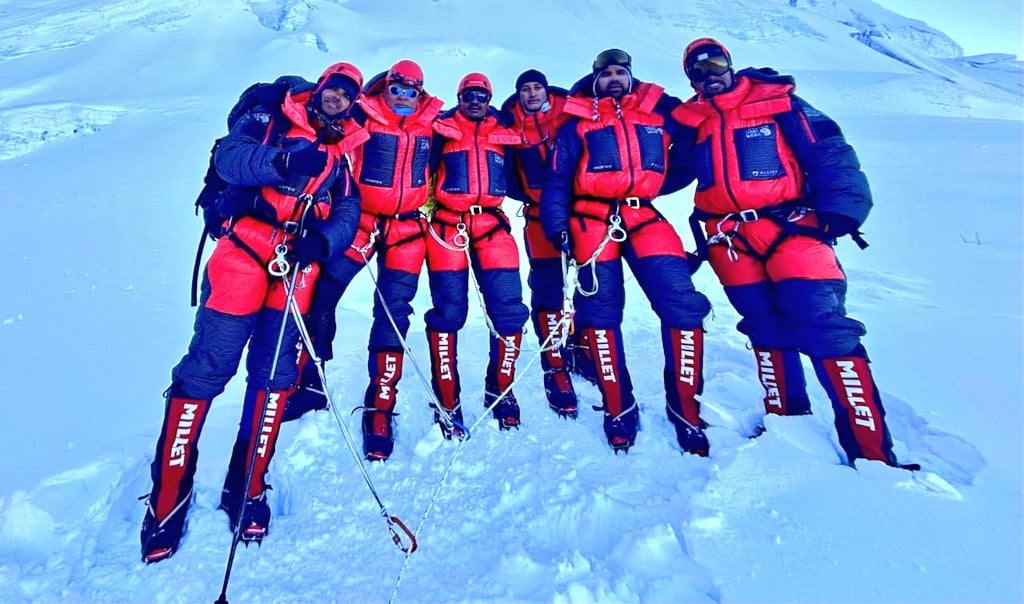In a historic feat of endurance, cooperation, and mountaineering excellence, a joint Indo-Nepal military expedition successfully scaled Mount Kanchenjunga, the world’s third-highest mountain at 8,586 meters, earlier today. The climbers overcame extreme cold, perilous ice walls, and low oxygen levels to complete their mission, marking a significant milestone in both military and diplomatic history.
Led by Colonel Sarfraz Singh of the Indian Army and Captain Prashant Khanka of the Nepali Army, the elite seven-member team—comprising four Indian and three Nepali soldiers—reached the summit as the morning sun lit up the Himalayan horizon. Dressed in advanced Millet mountaineering gear and equipped with oxygen masks, the climbers stood united at the summit, their national flags fluttering proudly in the thin air.
This mission was part of a broader Indo-Nepal bilateral initiative launched on April 4, 2025, by Indian Defence Minister Rajnath Singh, who flagged off twin expeditions to Mount Everest and Mount Kanchenjunga. The initiative aimed to deepen strategic and cultural ties through shared high-altitude challenges, fostering mutual trust between the neighboring armies.
The Kanchenjunga summit, located on the India-Nepal border, is known for its technical difficulty, unpredictable avalanches, and harsh weather. Unlike Everest, Kanchenjunga sees fewer successful ascents due to its treacherous terrain. A 2023 study in the Journal of Mountain Science revealed that the peak’s success rate remains under 40%, making this expedition’s success all the more remarkable.
Colonel Sarfraz Singh—Tenzing Norgay National Adventure Awardee and Director of the National Institute of Mountaineering and Allied Sports (NIMAS)—brought vast experience to the mission, having previously summited Everest (2018) and led expeditions to peaks such as Mount Kangto and Trishul. His leadership, along with the strategic planning and resilience of both military teams, was critical to the successful climb.
This collaborative effort goes beyond the realm of mountaineering. It showcases the strong defence ties between India and Nepal, nations that share not just borders but military traditions, cultural bonds, and joint training programs. As border management and high-altitude warfare become increasingly important in the region, such expeditions offer real-time training and relationship-building.
The Kanchenjunga ascent by this joint team will be remembered not just for its symbolic value, but also for what it represents: unity, courage, and preparedness in the face of formidable odds. The mission highlights the shared commitment of both armies to peace, partnership, and operational readiness in one of the world’s toughest environments.













